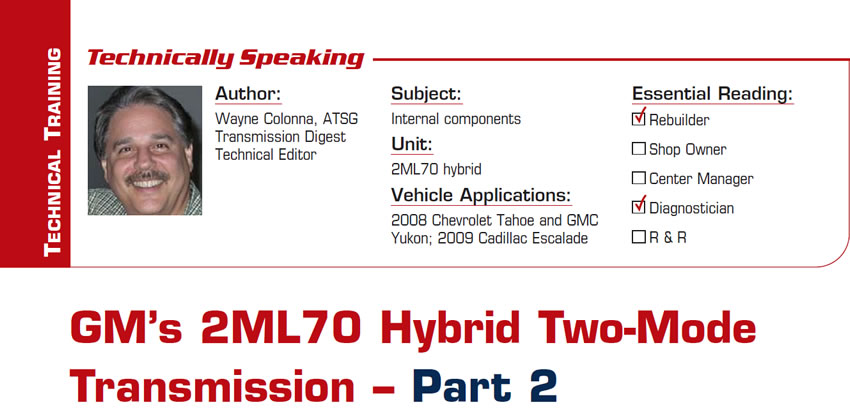Plug that Bore: U150/250 shift complaints
Valve-body bore wear has become so common that one can just about predict which bores will wear when a new transmission hits the streets. Any valve that is regulating is up for grabs. TCC, pressure control, clutch regulating valve, whatever you want to call it, if it moves back and forth quickly and consistently, more than likely it’s going to wear the bore.
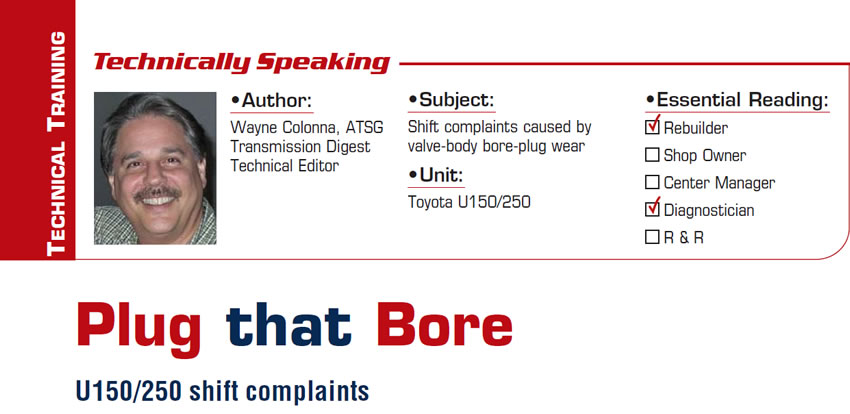
Solenoid Mix-ups
The SLT and SL1, 2 and 3 solenoids used in the U150/250 transmission (Figure 1) can easily be positioned incorrectly, causing a variety of malfunctions such as wrong-gear starts, no shifts and bind-ups, to name a few.
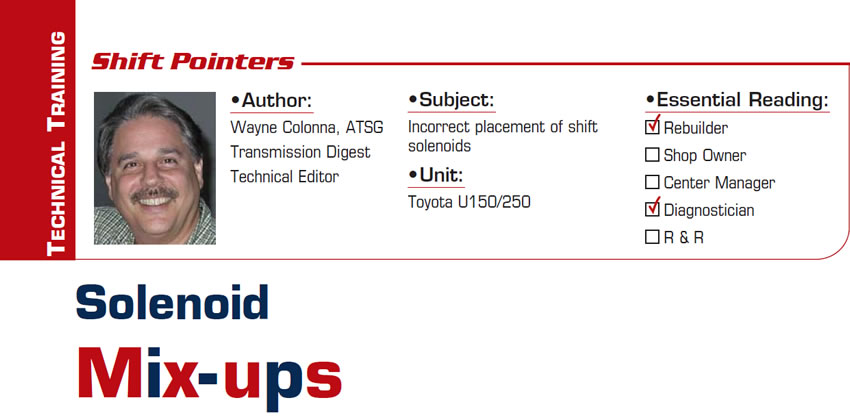
Getting Up to Speed with the RE4F04B
The RE4F04B transmission is no stranger to our technical hotline, for a variety of reasons. This article is about a self-inflicted injury that occurs every so often and, when it does, makes for a very bad day.

What Could It Possibly Be?
Recently, a local Lee Myles shop was dealing with a vehicle that had this 01045 code but didn’t go into failsafe right away. The symptoms it produced seemed to indicate a bad Multi-Function Switch (transmission-range sensor) on the transmission rather than the Tiptronic assembly in the console. So they brought the vehicle to our facility here in Miami.

GM’s 2MT70
Getting into the valve body is all we need to do to finalize our brief look at GM’s front-wheel-drive two-mode hybrid transmission.
If you recall from the first article, the TCM and solenoid-body assembly is first removed from the transmission followed by the plate attaching the assembly to the valve body (figures 1, 2 and 3).
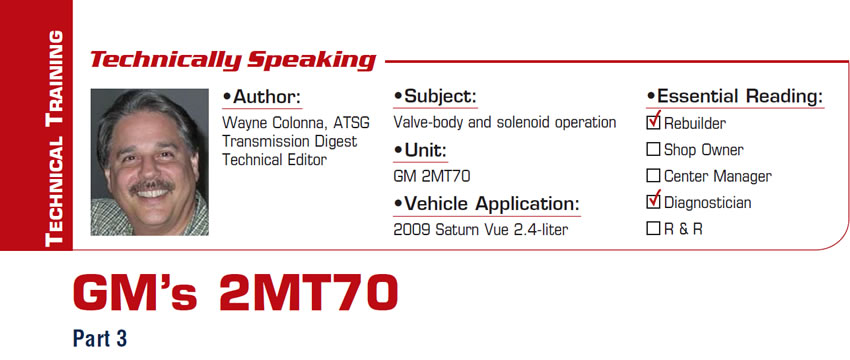
GM’s 2MT70
In the June 2010 issue of Transmission Digest we left off looking at the 2MT70 with having gone as far as removing the valve body. Getting back to this unit to have a brief look at the inside of it, with the rear covered removed the drive motor/generator assembly unit B becomes immediately visible (Figure 1). Inside the cover are the fourth clutch and the generator-position sensor.
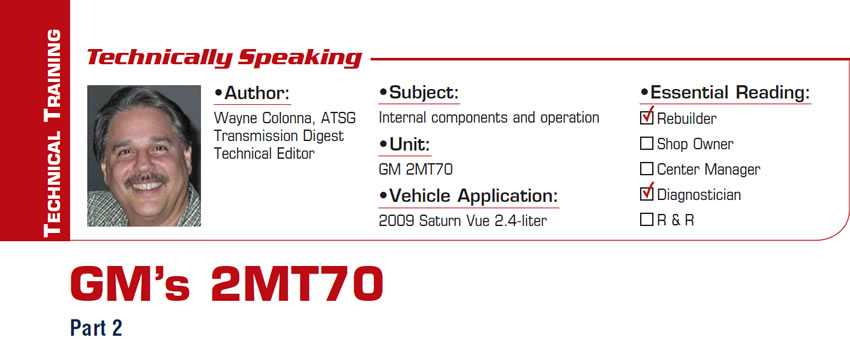
4F-27-3-Neutral-Hike!
A frequent call we receive on ATSG’s technical hotline with the 4F27E (FN4A-EL) transmission is a neutralizing shift going into fourth gear. The reason why it is such a frequent complaint is that there are several causes of this malfunction.

No Rear Lubrication
A JR403-E transmission from a 1995 Isuzu NPR came in over the counter to Luis Zabala’s transmission shop in Miami for repair of a front-seal leak. The unit was examined for damage because of the possibility of low-fluid-level conditions. The only wear or damage discovered was the pump bushing and seal.

GM’s Hybrid Two-Mode 2MT70 Transmission, Part 1
As mentioned and promised in the February issue of Transmission Digest, we will take a quick peek at the front-wheel-drive version of the longitudinally mounted two-mode 2ML70 transmission, called the 2MT70 (Figure 1).
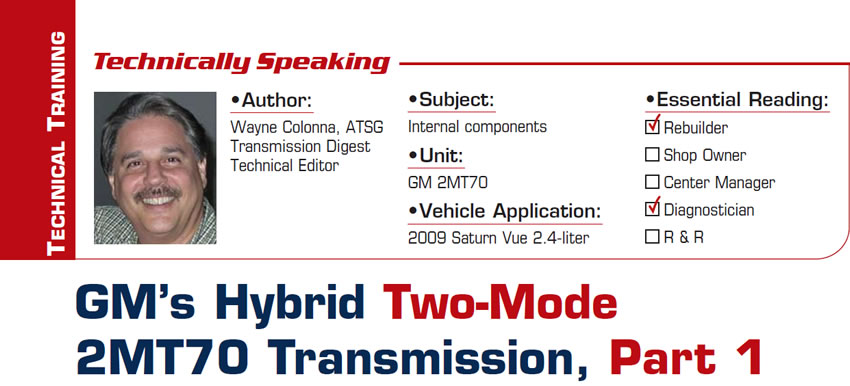
Another Option
I am sure that all of us who are in our late 40s and older can agree that valve bodies today are not what they used to be. Bore wear, valve wear, sleeve wear and leaking bore plugs are frequent ailments in most transmissions today.
Thanks be to several aftermarket companies that have developed repair kits to overcome these hurdles, saving transmission shops the expense of a new valve body.
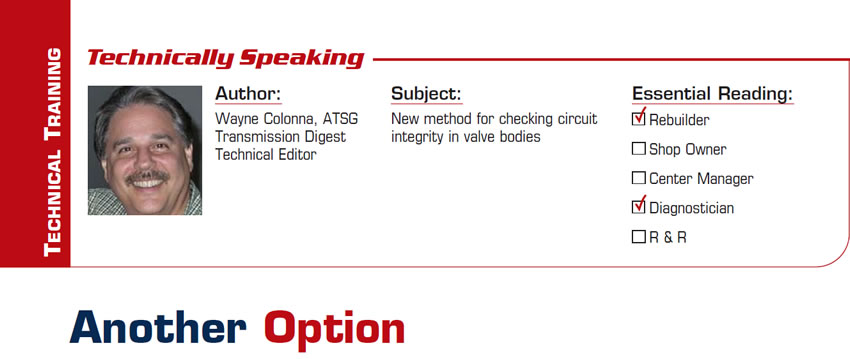
GM’s 2ML70 Hybrid Two-Mode Transmission
Having looked at the electrical and mechanical aspects of this rear-wheel-drive two-mode hybrid transmission in the past two issues, a brief look at the hydraulic components will finalize our comprehensive overview of the 2ML70.
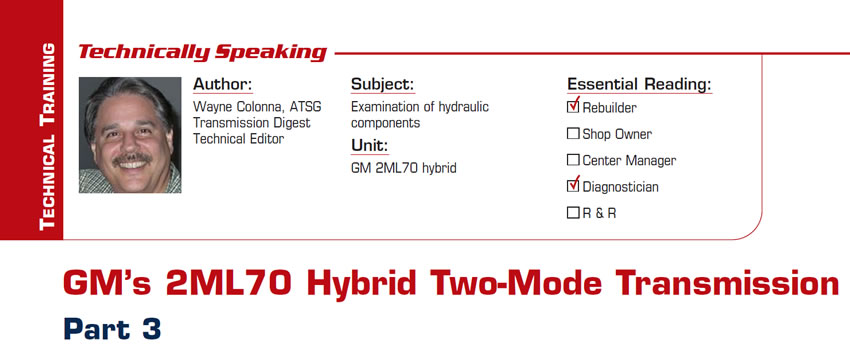
GM’s 2ML70 Hybrid Two-Mode Transmission – Part 2
As promised, we are back to take a look at the inside of this 2ML70 hybrid two-mode RWD transmission. When you look at the front of this transmission it almost appears to be receiving input torque from the gas engine through a conventional torque converter (Figure 1), but that is not the case. Power from the engine is delivered through a torque-damper assembly that is bolted to the crank and splines to the input shaft and pump. The reason for the front seal is that cooler return oil is supplied to the assembly through the pump to keep its damping parts lubricated.
